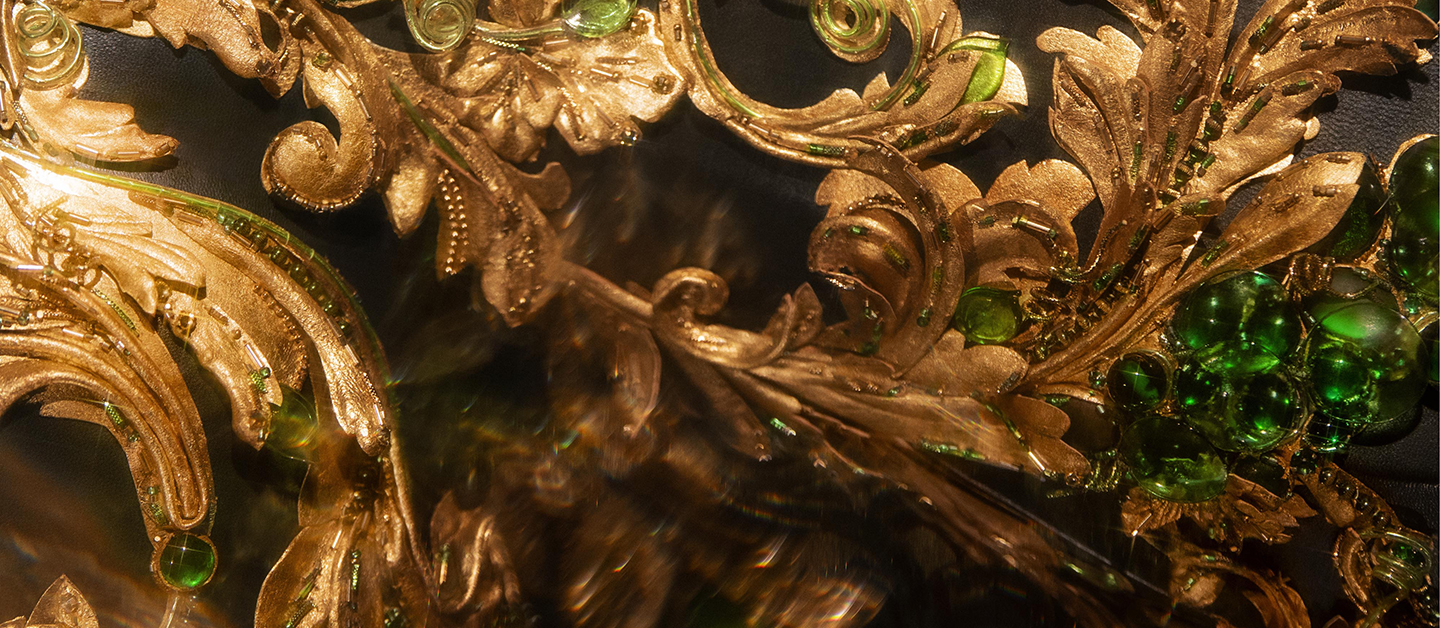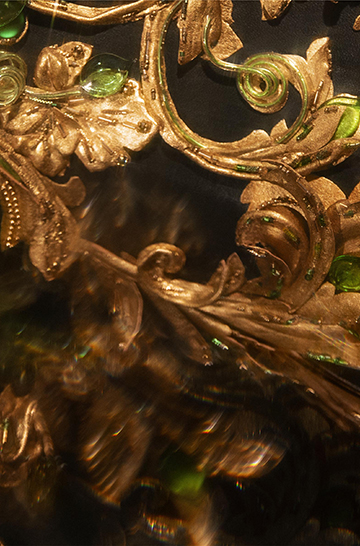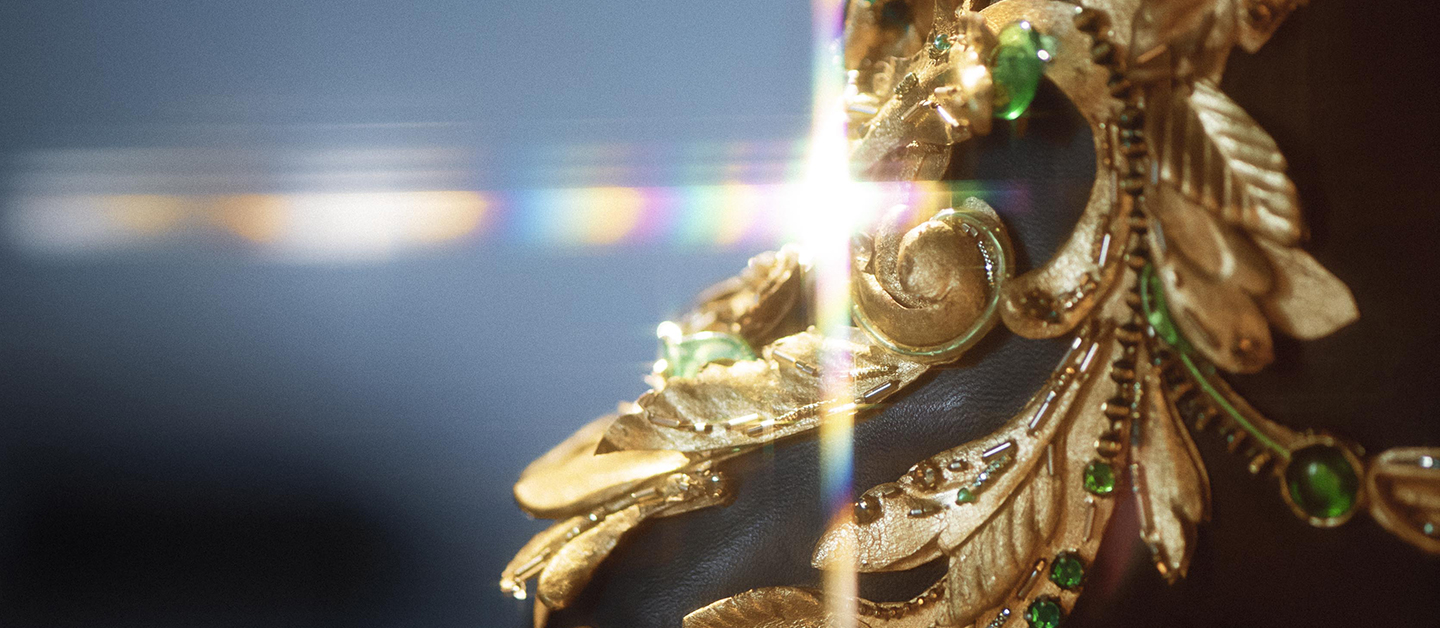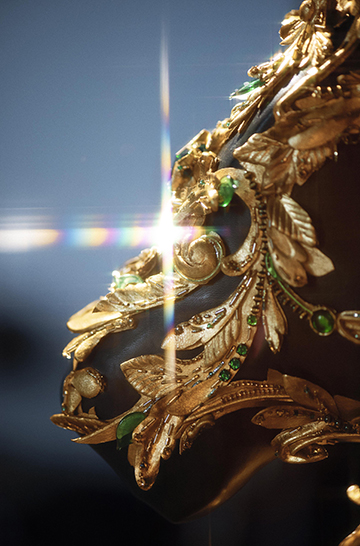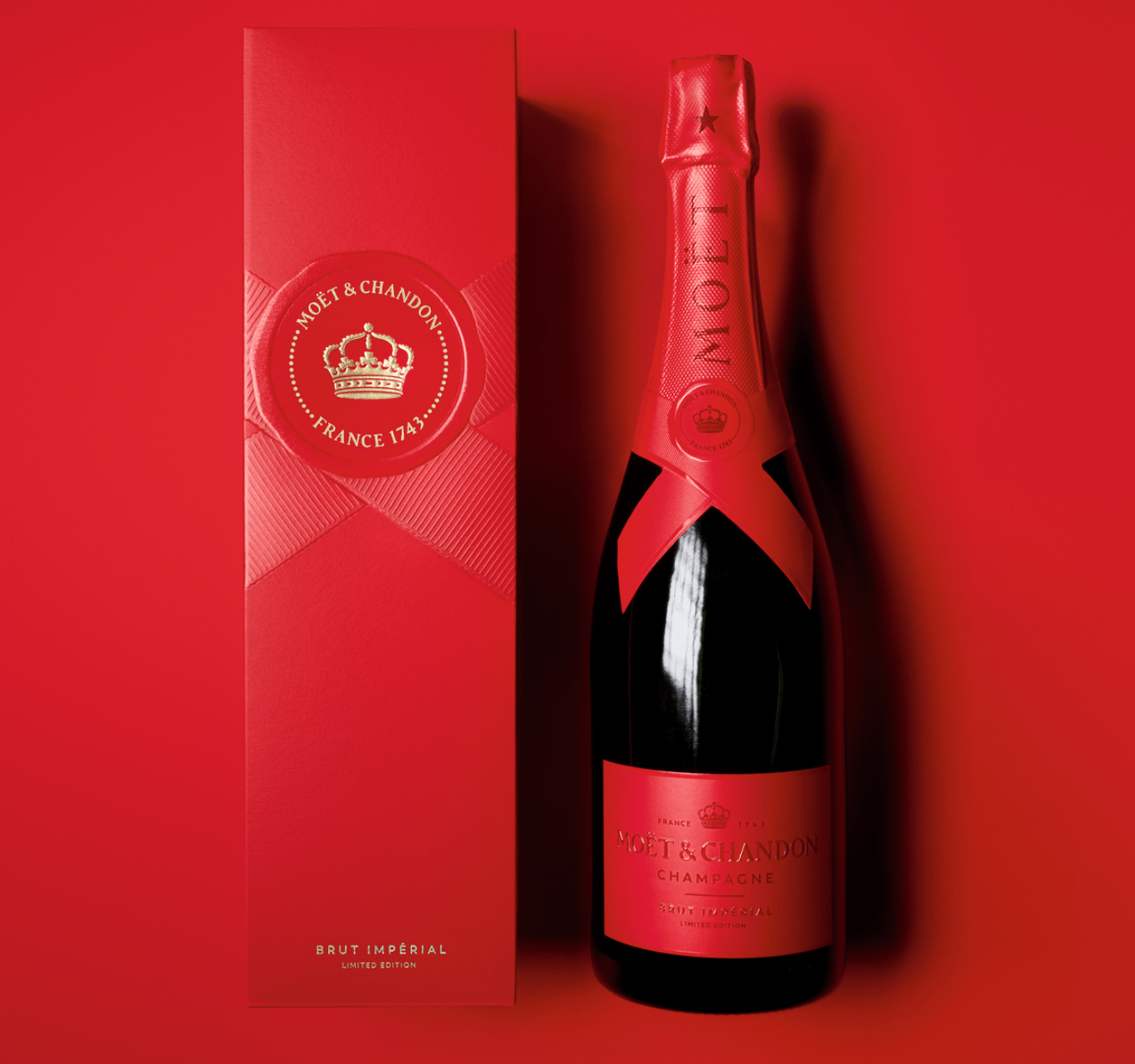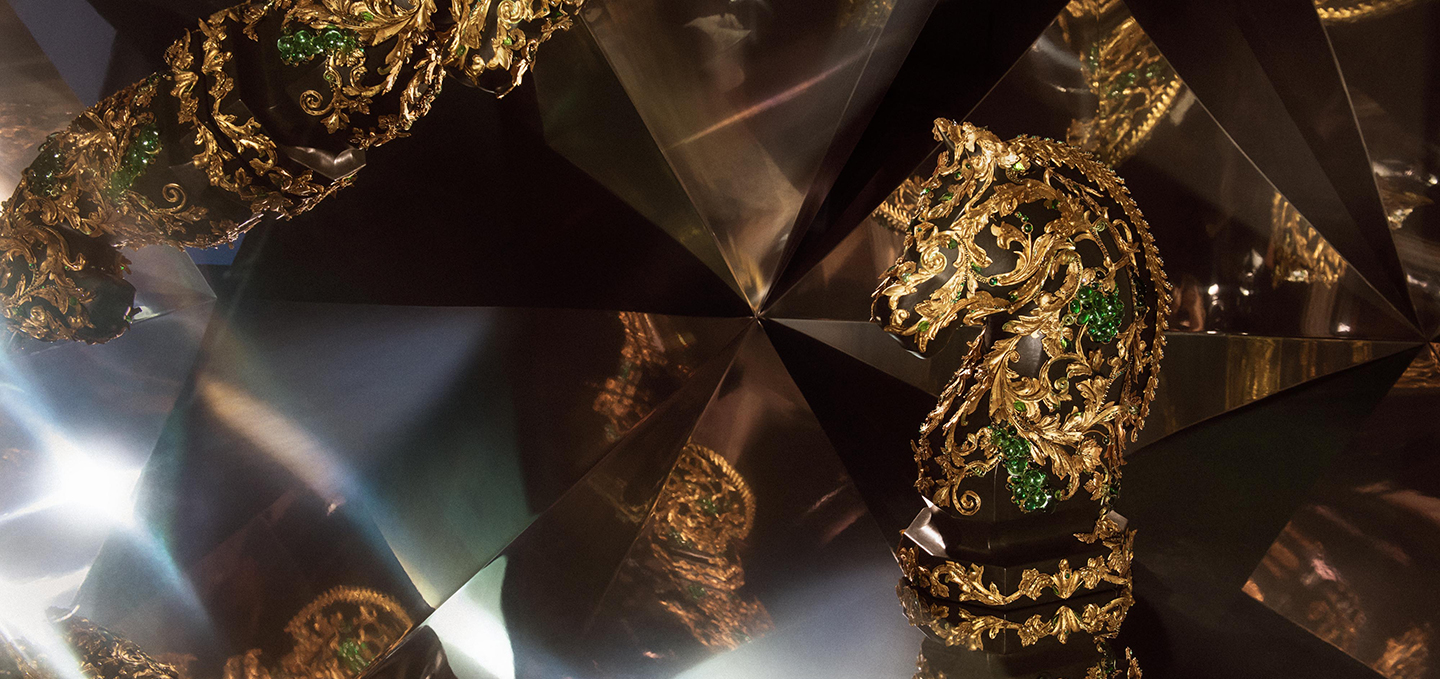
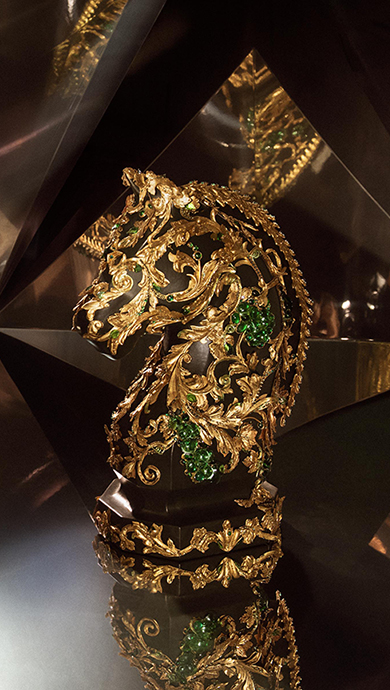
The Horse
Horses have always played a predominant role in vineyard work and the champagne trade. Since the foundation of the Maison, Claude Moët's Ledger-Journal bears witness to their importance and indicates horse purchases intended for transport or various fieldwork.
Baqué Molinié illustrates this relationship with the representation of a sculpted bust. Embroidered with baroque motifs suggesting well-tended vines, the piece is an interpretation of human skill with the help of animals.
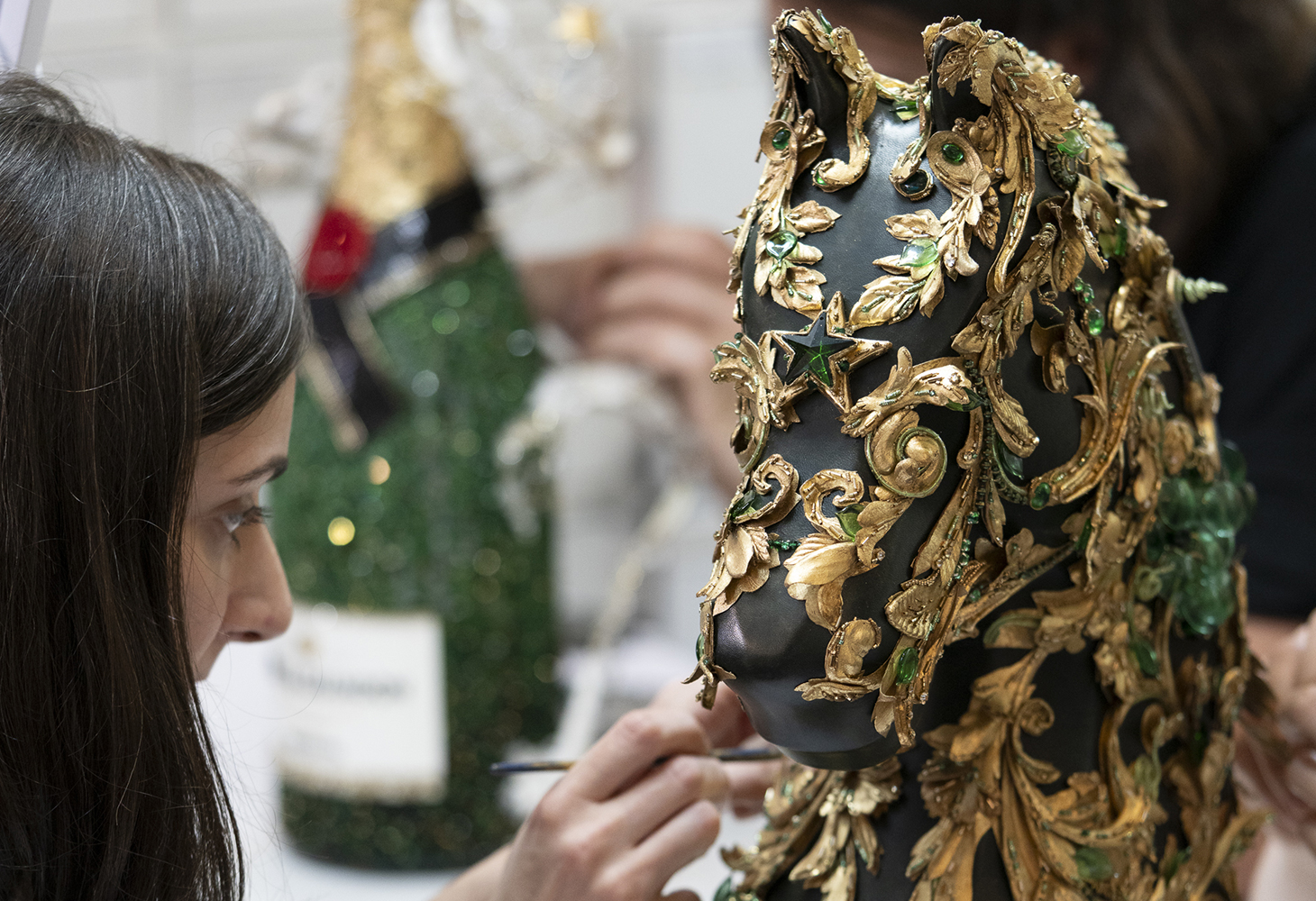
Moët & Chandon’s engagement with horsemanship
Atelier Baqué Molinié uphold Moët & Chandon’s engagement with horsemanship with a figure that evokes both a chess game piece and a sculpted bust, embroidered in baroque motifs suggesting controlled vegetation—an ode to the forces of nature refined by the hands of man, with the help of the noble horse.
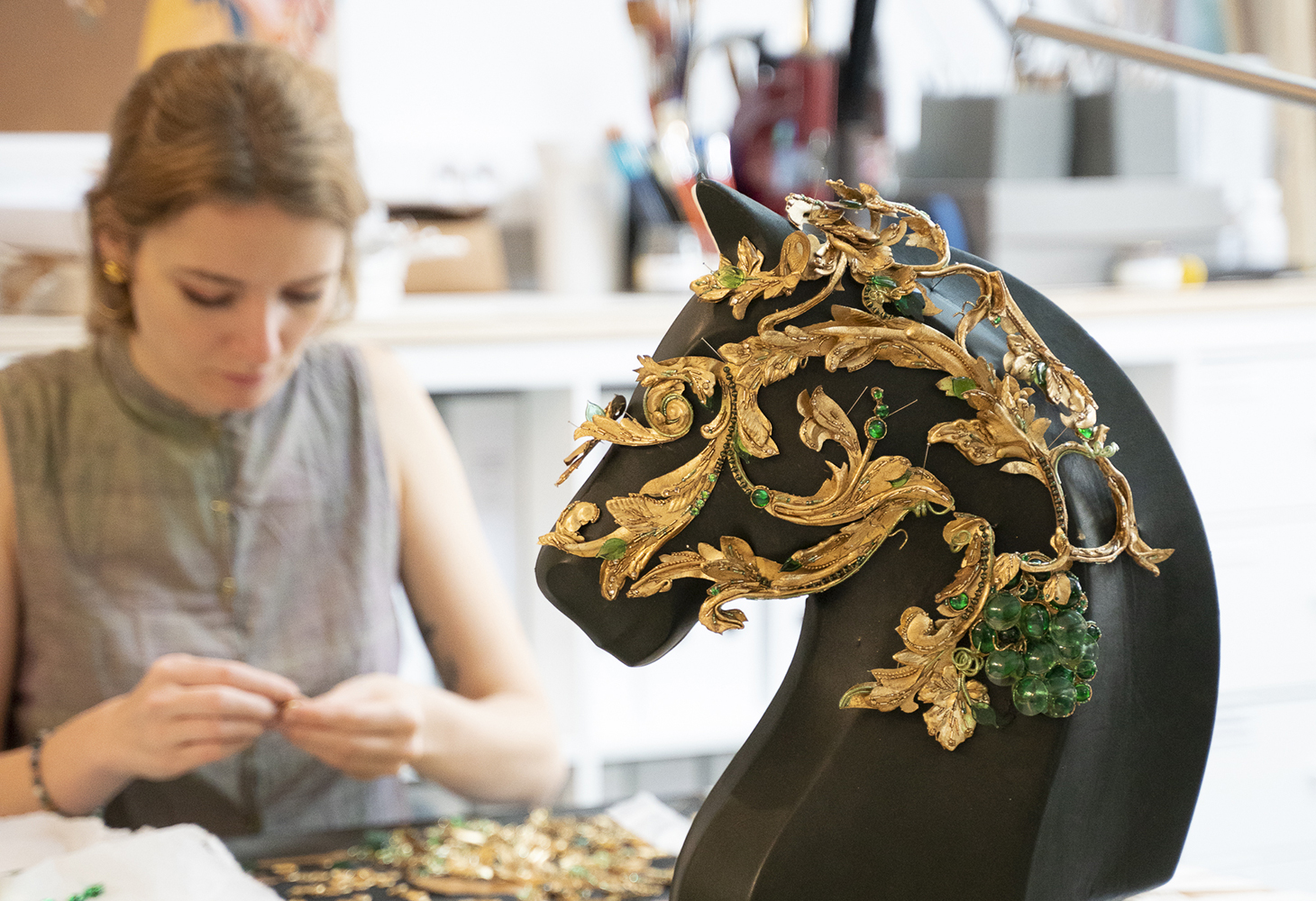
1,500 Hours of Work
Horse chess piece in leather covered with baroque elements made of molded leather, gold leaf finish, highlighted by glass cabochons, tube beading, and sequins upon leaf-shaped wire.


